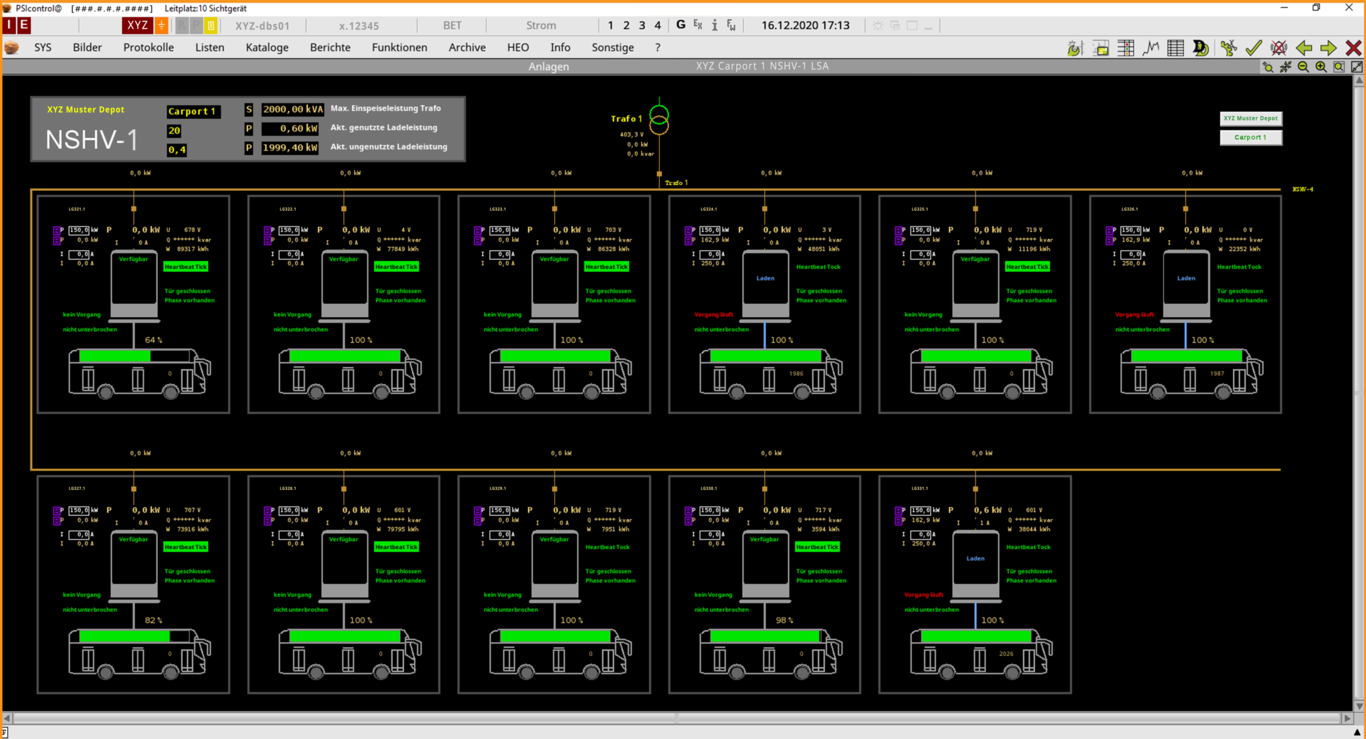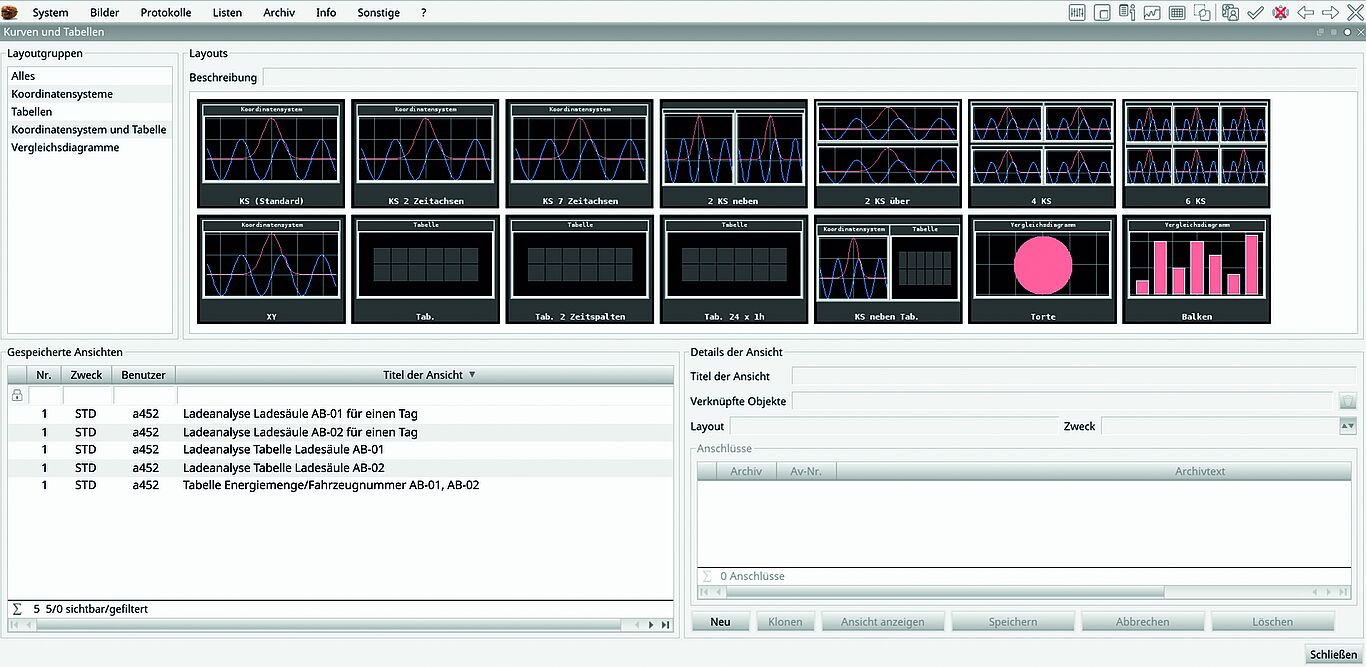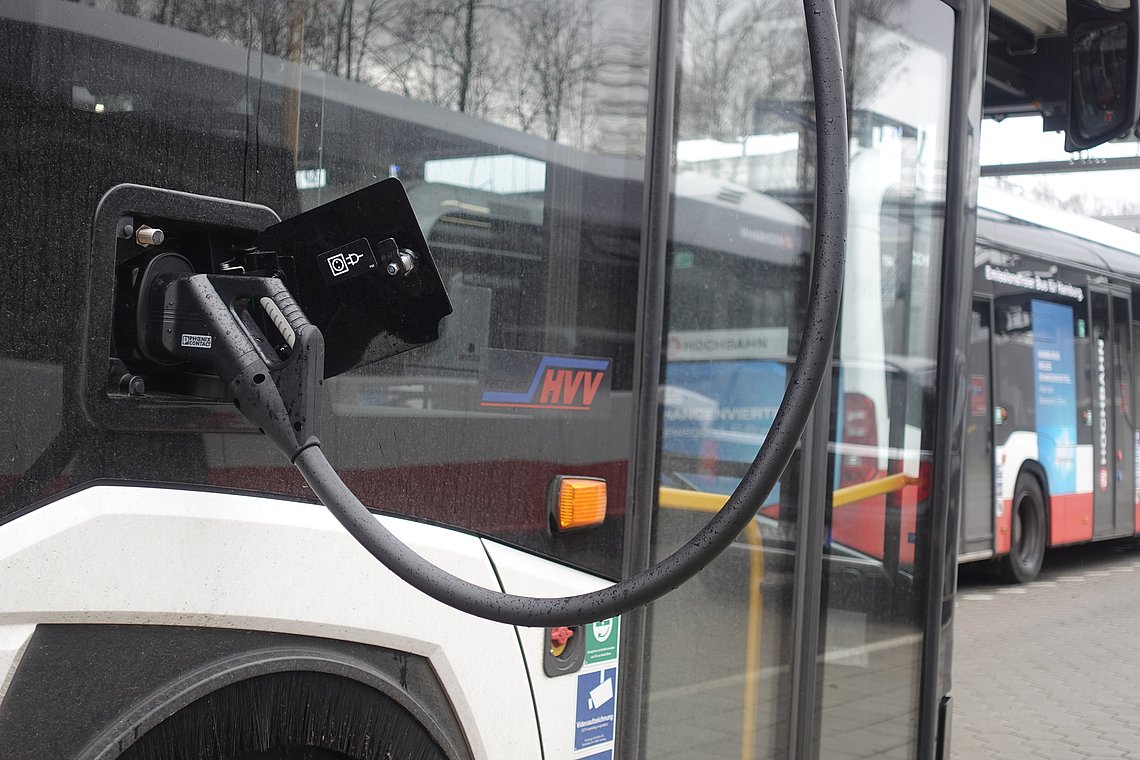The switch from diesel to electric vehicles in public transport is gathering pace. In the meantime, integrated software systems that combine the management of the depot and the charging system have proven their worth in this context. Two topics are particularly important here: the optimization of the interaction between driving operations and charging management and the creation of standard interfaces between different systems.
Local public transport has taken on a pioneering role in the transition to alternative drive systems. The EU's "Clean Vehicles Directive" and its mandatory minimum quotas for the procurement of clean and emission-free vehicles are providing strong impetus. Against this backdrop, companies are under increasing pressure to develop a practicable and sustainable electrification strategy.
The major challenge: only a few companies and suppliers have an overall understanding of the requirements of public transport operations and the management of an electrical infrastructure. However, this is precisely what will be needed to create the necessary structures quickly, use them efficiently in the long term and remain independent of the technologies of individual manufacturers. It is therefore important to optimize the complex interplay between vehicle operation and charging management and to create standards for communication between the various systems.
Considering operational and electrical parameters holistically
Charging electric buses on the route or in the depot presents transport companies with new challenges. The central question: how can it be ensured that the buses are available on time and charged as required - and as economically as possible?
It must be borne in mind here that far more influencing factors and dependencies play a role than, for example, the limited battery range. For example, the range of each individual vehicle is also influenced by the age of the battery, the outside temperature or the specific driving style of a bus driver. The decisive factor for charging the vehicles is in turn
- the charging infrastructure on the route or in the depot,
- the specific connected load and
- Possible restrictions to the electrical supply due to grid fluctuations.
Last but not least, aspects such as grid-friendly charging, battery conservation or charging at favorable conditions can become a relevant economic factor.
A large number of operational and electrical influencing parameters and their complex dependencies must be taken into account and balanced in an optimized manner. If a fleet comprises many vehicles, this planning is only possible with the help of software.
Automated optimization of complex dependencies
Transport companies therefore benefit from integrated depot and charging management systems that are specially designed for emission-free public transport. By combining the PSIeDMS depot management module with the PSIsmartcharging charging management system, the PSIebus system merges the data from operational pre-planning with the data from the electrical systems.
Vehicle and operating data flow together with weather forecast data and information on the feed-in points, transformers and charging stations.
This forms the basis for resource-saving, demand-oriented charging processes. At the same time, in the event of imminent overload or restrictions in energy supply, the power is automatically redistributed to stabilize the grid status and still ensure reliable operation.

The system determines the best charging process for each vehicle
PSI's own optimization core Qualicision allows all relevant criteria and their multi-layered - and in some cases opposing - dependencies to be balanced at high speed. Depending on their specific structures, companies can prioritize and weight all parameters individually and adjust them flexibly.
The following scenario is conceivable, for example: The minimum state of charge of a battery for the next planned cycle is incorporated restrictively into the overall planning as a requirement to be fulfilled. Qualitative criteria, such as a reduced maximum charging capacity that is gentle on the battery or a reduced target state of charge of the battery, are prioritized and weighted in relation to each other and are also included as criteria in the charge planning. The resulting slowdown in battery ageing is definitely a relevant economic factor for large companies.
Standardized communication processes between depot and charging management
Because connected systems such as DMS (PSItraffic/DMS) or ITCS (PSItraffic/ITCS) will have to be closely interwoven with charging and load management systems in the future, and these in turn with charging stations, it is also necessary to transfer interfaces into standards. Only processes defined and standardized in this way, including responsibilities, will guarantee investment security and enable transport companies to freely select their suppliers in the future.
The VDV 463 standard is currently about to be published. The interface has its origins in the successful pilot project currently in operation at Hamburger Hochbahn. The standard primarily describes the bilateral exchange of information between the depot and loading management system and defines both the data format and the transport protocol for this. This includes, for example, which operational parameters are transferred from the operations or depot management system to the charging management system (LMS), how, where and with what priority via the so-called charging request and how the LMS sends back the charging planning in detail as charging information.

Specification of interfaces between charging management and charging stations
The open and certified interface OCPP 1.6 (Open Charge Point Control) already exists for the connection between the charging management systems and charging points. On the one hand, it describes how the messages between the two components are used for monitoring and charging control and, on the other hand, the behavior expected by the charging infrastructure and, in some cases, by the buses, including the linked data.
The problem is that the specific way in which messages are used in this context remains open. For example, the protocol does not define precisely enough which charging profiles must be used for central charging control and which data must in turn be provided by the charging station so that central monitoring and charging control is possible. The same applies to the description of the use of the charging profiles in the event of communication failures or disruptions to the energy supply.
The consequence is that the different or incomplete implementation of the smart charging profiles causes high costs when connecting the charging stations to a load and charging management system. For this reason, PSI has published the OCPP 1.6 messages in the document "PSIready" document. This includes, in particular, the consideration of energy supply restrictions and the precise definition of emergency operation, which is missing in most interface descriptions.
Longterm success with an all-in-one system and standards
Converting to electromobility has a significant impact on operational processes in transport companies. It is important to combine the processes of the depot with those of charging management and to balance the multi-layered dependencies in an optimized way. Standardization efforts, such as in the context of VDV standard 463, but also in the context of the interaction between charging management systems and charging stations, are also absolutely essential in order to enable safe and efficient operation and manufacturer independence for companies in the long term.


